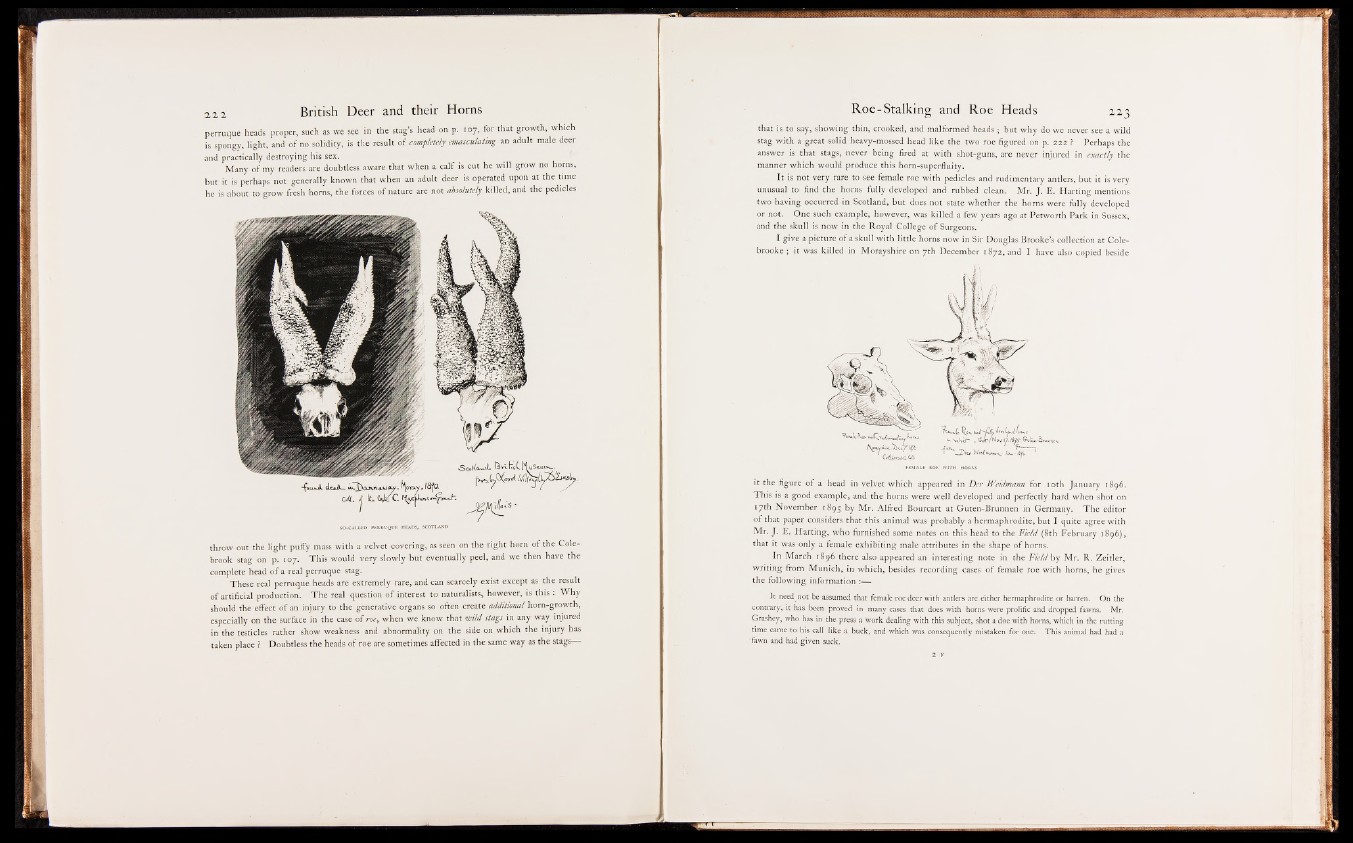
perruque heads proper, such as we see in the stag's head on p. 107, for that growth, which
is spongy, light, and o f no solidity, is the result Mcompletely emasculating an adult male dees
and practically destroying his sex.
Many o f my readers are doubtless aware that when a calf is cut he will grow no horns,
but it is perhaps not generally known that when an adult deer is operated upon at the time
he is about to grow fresh horns,^ e forces o f nature are not absolutely killed, and the pedicles
SO-CALLED PERRUQUE HEADS, SCOTLAND
throw out the light puffy mass with a velvet covering, as seen on the right horn o f the Cole-
brook stag on p. 107. This would very slowly but eventually peel, and we then have the
complete head o f a real perruque stag.
These real perruque heads are extremely rare, and can scarcely exist except as the result
o f artificial production. The real question of interest to naturalists, however, is this : Why
should the effect o f an injury to the generative organs so often create additional horn-growth,
especially on the surface in the case o f roe, when we know that wild stags in any way injured
in the testicles rather show weakness and abnormality on the side on which the injury has
taken place ? Doubtless the heads o f roe are sometimes affected in the same way as the stags
that is to say, showing thin, crooked, and malformed heads ; but why do we never see a wild
stag with a great solid heavy-mossed head like the two roe figured on p. 222 ? Perhaps the
answer is that stags, never being fired at with shot-guns, are never injured in exactly the
manner which would produce this horn-superfluity.
It is not very rare to see female roe with pedicles and rudimentary antlers, but it is very
unusual to find the horns fully developed and rubbed clean. Mr. J. E. Harting mentions
two having occurred in Scotland, but does not state whether the horns were fully developed
or not. One such example, however, was killed a few years ago at Petworth Park in Sussex,
and the skull is now in the Royal College o f Surgeons.
I give a picture o f a skull with little horns now in Sir Douglas Brooke’s collection at Cole-
brooke ; it was killed in Morayshire on 7th December 1872, and I have also copied beside
it the figure o f a head in velvet which appeared in Der Weidmann for 10th January 1896.
This is a good example, and the horns were well developed and perfectly hard when shot on
17th November 1895 by Mr. Alfred Bourcart at Guten-Brunnen in Germany. The editor
o f that paper considers that this animal was probably a hermaphrodite, but I quite agree with
Mr. J. E. Harting, who furnished some notes on this head to the F ield (8th February 1896),
that it was only a female exhibiting male attributes in the shape o f horns.
In March 1896 there also appeared an interesting note in the Field by Mr. R. Zeitler,
writing from Munich, in which, besides recording cases o f female roe with horns, he gives
the following information
It need not be assumed that female roe deer with antlers are either hermaphrodite or barren. On the
contrary, it has been proved in many cases that does with horns were prolific and dropped fawns. Mr.
Grashey, who has in the press a work dealing with this subject, shot a doe with horns, which in the rutting
time came to his call like a buck, and which was consequently mistaken for one. This animal had had a
’ fawn and had given suck.